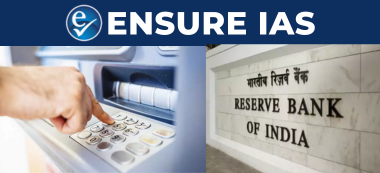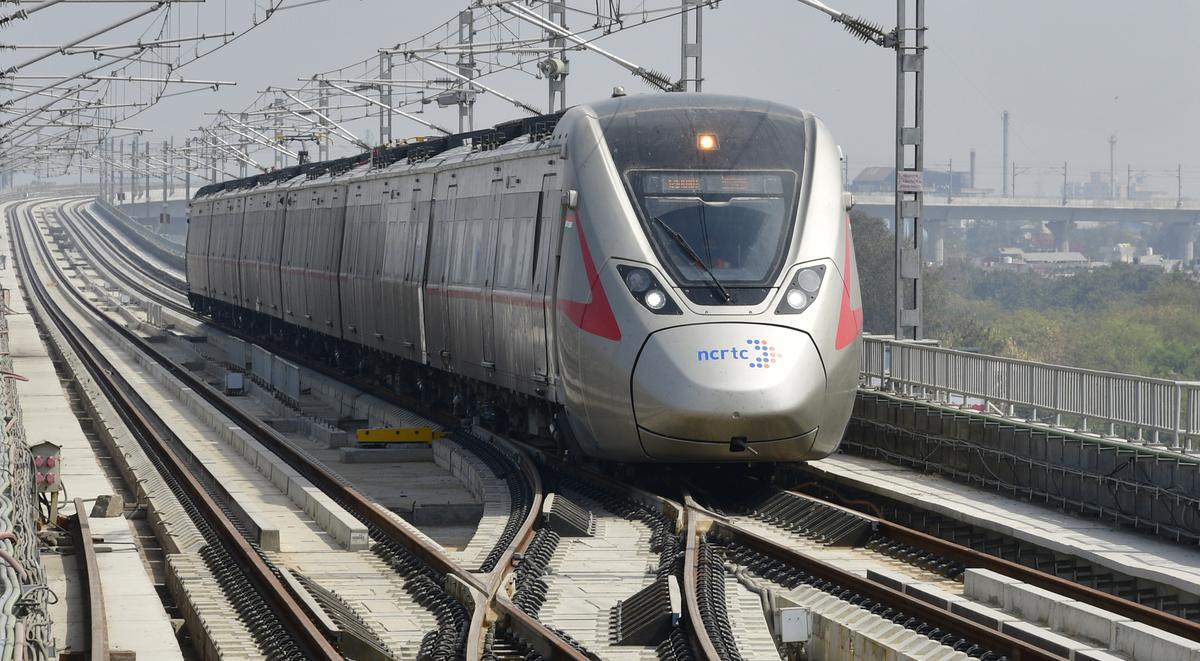- Courses
- GS Full Course 1 Year
- GS Full Course 2 Year
- GS Full Course 3 Year
- GS Full Course Till Selection
- Online Program
- GS Recorded Course
- NCERT (Recorded 500+ Hours)
- Polity Recorded Course
- Geography Recorded Course
- Economy Recorded Course
- AMAC Recorded Course
- Modern India, Post Independence & World History
- Environment Recoded Course
- Governance Recoded Course
- Science & Tech. Recoded Course
- International Relations and Internal Security Recorded Course
- Disaster Management Module Course
- Ethics Recoded Course
- Essay Recoded Course
- Current Affairs Recoded Course
- CSAT
- 5 LAYERED ARJUNA Mentorship
- Public Administration Optional
- ABOUT US
- OUR TOPPERS
- TEST SERIES
- FREE STUDY MATERIAL
- VIDEOS
- CONTACT US
RBI allows hike in ATM cash withdrawal charges by banks
RBI allows hike in ATM cash withdrawal charges by banks
31-03-2025

-
ATM Transaction Fee Increase:
- The Reserve Bank of India (RBI) has approved an increase in the ATM transaction fee from Rs 21 to Rs 23.
- This change will take effect from May 1, 2025.
-
Free Transactions:
- Customers are eligible for 5 free transactions per month (both financial and non-financial) at their own bank ATMs.
- Customers are also entitled to free transactions at other bank ATMs:
- 3 transactions per month in metro centres.
- 5 transactions per month in non-metro centres.
-
Charges Beyond Free Transactions:
- Beyond the free transactions, customers may be charged a maximum fee of Rs 23 per transaction.
-
ATM Interchange Fee:
- The ATM interchange fee, which is the fee a bank pays to another bank for ATM services, will be determined by the ATM network.
- The last change in the ATM interchange fee structure was made in August 2021, when the fee for financial transactions was increased from Rs 15 to Rs 17 and for non-financial transactions from Rs 5 to Rs 6.
-
Rationale for the Hike:
- The fee hike was announced due to the increasing costs associated with ATM deployment and maintenance incurred by banks and white-label ATM operators.
- The decision was made after considering the need to balance the expectations of stakeholder entities and ensuring customer convenience.
- The last revision of ATM transaction charges for customers was in August 2014, and the last change in the interchange fee structure was in August 2012.
ATM Network Management:
- India’s ATM network, crucial to the banking infrastructure, is primarily managed by the National Financial Switch (NFS).
- The National Payments Corporation of India (NPCI) operates this multilateral ATM network.
Financial Impact on Banks from ATM Cash Withdrawals:
-
State Bank of India (SBI):
- SBI generated a profit of Rs 331 crore from ATM cash withdrawals for the fiscal year ended March 2024.
- SBI has around 65,000 ATMs across the country, contributing significantly to its revenue from ATM withdrawals.
- Over the last 5 years, SBI has made a profit of Rs 2,043 crore from ATM transactions.
-
Public Sector Banks (PSBs):
- In contrast to SBI’s success, other public sector banks collectively faced a loss of Rs 925 crore from ATM cash withdrawals in FY 2023-2024.
- Among these losses:
- Bank of Baroda incurred a loss of Rs 212 crore.
- Union Bank faced a loss of Rs 203 crore.
- Over the past five years, nine public sector banks (PSBs) collectively reported a loss of Rs 3,738 crore from ATM cash withdrawals.
-
Profit-Making PSU Banks:
- Only 2 other PSU banks besides SBI made a profit from ATM cash withdrawals over the past five years:
- Punjab National Bank (PNB): Rs 90.33 crore.
- Canara Bank: Rs 31.42 crore.
- Only 2 other PSU banks besides SBI made a profit from ATM cash withdrawals over the past five years:
-
Challenges for Other PSBs:
- Most other PSBs are struggling to balance operational costs with declining transaction volumes and fee structures.
- This indicates a significant financial challenge for PSBs in maintaining their ATM operations effectively.
About India's ATM network, the National Financial Switch (NFS), and the National Payments Corporation of India (NPCI):
-
National Financial Switch (NFS):
- It's the largest multilateral ATM network in India.
- It facilitates interoperable ATM transactions across the country.
- Its primary goal is to make ATM services convenient and affordable.
- It's operated by the National Payments Corporation of India (NPCI).
- It was originally developed by the Institute for Development and Research in Banking Technology (IDRBT) and later taken over by NPCI.
- NFS facilitates various transactions beyond cash withdrawals, including balance inquiries, mini-statements, mobile banking registration, cheque book requests, and card-to-card fund transfers and also UPI based cash withdrawals.
- It also facilitates interoperable cash deposit.
-
National Payments Corporation of India (NPCI):
- NPCI is the organization that currently operates the NFS.
- It plays a crucial role in India's retail payment systems.
- NPCI has also enabled UPI based cash withdrawals from ATM's.
-
Historical Context:
- The first ATM in India was established by HSBC in Mumbai in 1987.
- The Indian Banks' Association (IBA) created Swadhan, an early shared ATM network.
- Then IDRBT developed the NFS to further interconnect ATMs nationwide.
Types of ATMs in India
|
Type |
Description |
|
White-Label ATMs (WLAs) |
Operated by non-bank entities. |
|
Brown-Label ATMs |
Owned by banks, operated by third-party. |
|
Green Label ATMs |
For agricultural transactions. |
|
Orange Label ATMs |
For stock market transactions. |
|
Yellow Label ATMs |
For e-commerce transactions. |
|
Pink Label ATMs |
Specifically for women. |
|
Also Read |
|
| FREE NIOS Books | |



